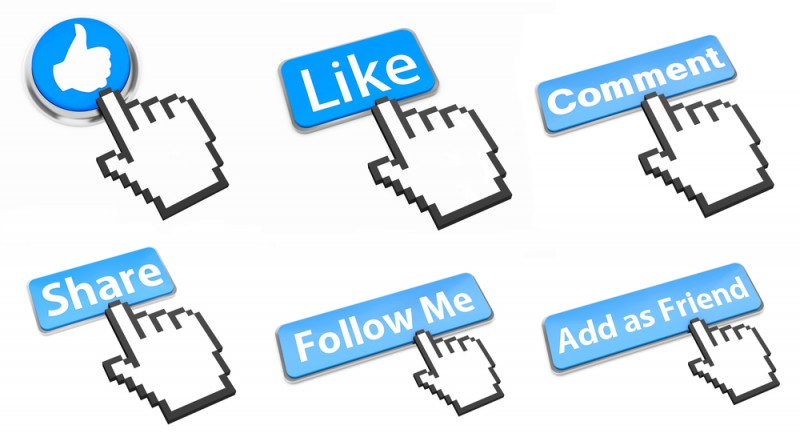Is all engagement created equal? The short answer is no. The long answer is that engagement is a tricky concept, and it can be extremely misleading if relied on too heavily. Here’s what it is, when it might lead you astray, and how you can use it most effectively.
How engagement is measured
Obviously, it depends on what medium you’re working with. Social media engagement is going to be different from email engagement, and even within these broad categories, each channel is going to have its own unique metrics.
But that doesn’t mean we can draw some general conclusions.
First, engagement always takes into account how many people were exposed to something. Pay-per-impression ad campaigns actually charge on this basis. For engagement, the primary argument is that to know anything, you need to know how many people saw something so you can know what percentage ‘engaged.’
Second, engagement metrics are usually measured when a user takes action. Likes, hearts, re-pins, commenting, sharing, even reading to the end – these are all
actions.
This is the heart of engagement. It’s getting the consumer to do something, no matter how small or minute. These actions are quantifiable, and are used to extrapolate engagement metrics.
To take action, a browser has to be engaged to a certain degree. So if you count how many times actions are taken, then you have an approximation of how many people are engaged.
For comparing different content in the same channel, say two different blog posts, engagement metrics are a very useful tool. They can help you hone your online content to better connect with the people. However, there are problems with engagement metrics as well.
Not all engagement is created equal

The crux of engagement measurement is that you’re using metrics to try and quantify something that is inherently qualitative. No one reads a website and says, ‘ok, I was 10% engaged, so I’ll like this blog post. But I wasn’t 15% engaged, so I won’t comment.’ That’s not how people work!
Engagement metrics give you an
indication of what people like and what they don’t. But it’s only that – an indication. A ‘like’ doesn’t necessarily mean that you like something. It might mean that you didn’t read it but tapped it by accident. Who knows your motivations? Certainly not engagement metrics.
But the biggest problem is that not all engagement is created equal but is often weighted as such. The required energy for a like or a re-pin or a heart or a retweet is significantly less than the required energy to enter an email, fill out a form, or even buy a product. However, these actions are compared as if they are equal under the general purpose title ‘engagement’.
For example, say a company might have two channels, a Facebook page and an email signup form. The Facebook page might be driving 12% engagement (that is, for every 100 people who visit the page, 12 people like it), whereas the email form might be driving 3% engagement (for every 100 people who visit the page, only 3 sign up). So looking at this from an engagement perspective, Facebook is better.
But how often have you gone on to buy something just because you liked a page on Facebook? Probably not very often. And how often have you gone on to buy something after you signed up to an email list? Probably a lot more often.
So one channel, with only 3% engagement might drive $1,000 of business, where another with 12% engagement might drive nothing.
When and how to use engagement metrics

But that’s not to say that engagement is a terrible thing that should never be used. Not at all! It’s just important to recognize its limitations. As we mentioned, it’s a fantastic tool for helping you hone your intra-channel marketing materials. But it has other functions too.
Engagement is great for measuring brand awareness.
With bottom line sales, marketing efforts are directly linked to their ability to generate revenue. But with a brand awareness campaign, while that’s the long term goal, the short term objective of the campaign isn’t to increase revenue – it’s to get your name out there.
And while there is definitely value in your brand name, it’s hard even for the most sophisticated analysts to know what it actually is. The result is that brand awareness marketing doesn’t tie as closely to the bottom line, so engagement metrics give you at least some idea of how many people are consuming and taking on board your message.
And finally, engagement metrics can be used extremely effectively as a predictor of success in a sales funnel. This is why there is so much enthusiasm around them, and we’d be loath to leave you thinking that engagement is all terrible.
To give you an example of this, let’s look at Groove.
Groove found that by measuring how long people stayed on their site and how often they visited, they could predict is someone would convert into a paying customer. For example, if they stayed for over 3 minutes and visited 4.4 times per day, they were much more likely to convert. They also worked out the inverse, and determined that someone who only spent 35 seconds on their first session and only visited 3 times per day were less likely to convert.
So, Groove created automated emails to reach out to the non-converters to see if they needed any help, which improved their conversion rate from those low-converting prospects by 30%.
By following a correlation between engagement and conversion, they were able to put their sales efforts exactly where they needed to be.
[contextly_sidebar id="iI4q3ON72JcvHoFwuFYnBuXFdfyURTn0"]
Conclusion
Engagement can be a really fantastic tool – if it’s used effectively. It’s important to understand the limitations of engagement, especially in relation to your marketing objectives. Engagement is simply a metric that we’ve created to try and quantify how much people like something. It’s not a hard and fast concept, and you need to be wary of assuming too much from engagement statistics.
However, it remains an important tool for comparing content within channels, for addressing branding success, and for informing marketing decisions of correlations in behaviours (e.g. average time spent on a site with conversion rate).
So embrace engagement! Just remember – it’s not the answer to every marketing problem, and any engagement miracle should be taken with a hefty grain of salt.
